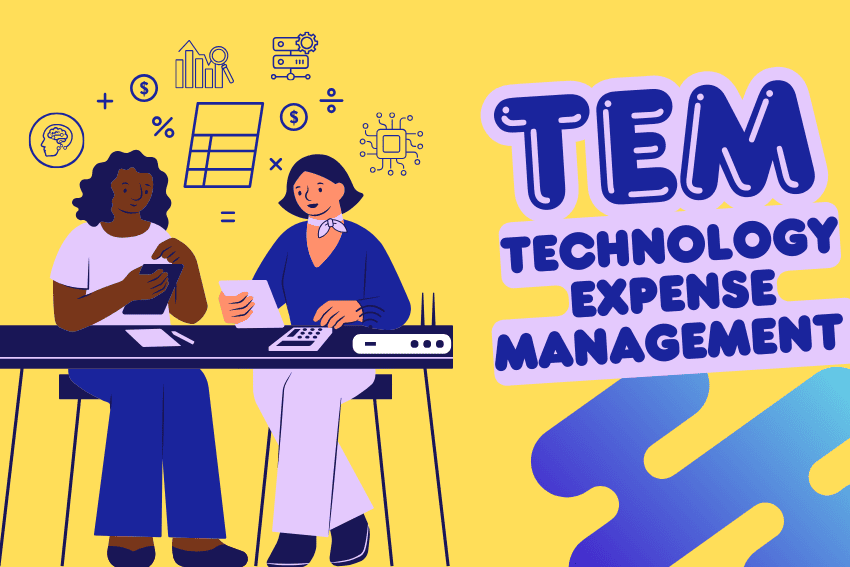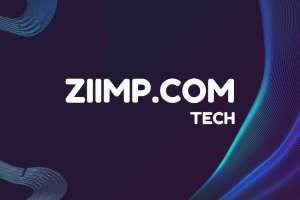Technology Expense Management (TEM) refers to the practice that is necessary to all kinds of organizations and is intended to enable efficient and cost-effective management of the expenses that pertain to technologies. As businesses continue to embrace technology in their operations, TEM has gained significance when it comes to cost-control, resource optimization, and financial transparency.

This beginner guide is an extensive breakdown of Technology Expense Management (TEM), its main components, the advantages, and the pitfalls to avoid.
What is Technology Expense Management (TEM)?
Technology Expense Management is a systematic approach to operationalizing and optimizing technology-related costs across a wide range of IT assets and services. It covers a wide range of operations including procurement, inventory control, contracting, invoice processing, and compliance monitoring. The main purpose of TEM is to automate these activities in such a manner that technology investments are well-synced with organizational objectives and cost waste is avoided.
Key Components of Technology Expense Management
- Procurement: This entails the sourcing and acquisition of required IT resources and services by means of vendors. Some of the effective procurement strategies are competitive bidding, negotiation of a contract and use of volume discounts.
- Inventory Management: It is important to track all IT assets, software license and hardware devices. Through inventory management, proper information is obtained, and over-provisioning or under-provisioning of resources is prevented.
- Processing of Invoices: Proper verification and processing of invoices sent by vendors to ensure that invoices are processed in a manner that will not lead to overpayments or discounts are missed. In this process automation can achieve a lot of accuracy and efficiency.
- Contract Management: Contract monitoring, expiration dates, renewal opportunities and service levels under contracts with vendors. Effective contract management allows the organization to achieve maximum value in its agreements.
- Compliance Monitoring: It is also important to monitor compliance with the law and regulations. Monitoring of the compliance assists in the avoidance of fines and penalties that accrue as a result of non-compliance.
The Benefits of Technology Expense Management
Technology expense management (TEM) has become an essential practice that organizations have undertaken to ensure they manage their technology-related expenses and optimize on efficiency in resource usage. Using dedicated software and procedures, TEM helps companies to have an accurate view of their IT spending, streamline procurement activities, and make sure that their company policy is being adhered to. Some of the major benefits of implementing TEM are as follows:
Cost Savings and Budget Control
TEM helps reduce non-essential expenditure on technology services and hardware, which is one of the most important advantages of this technology. TEM solutions enhance organizations to manage their resources to a greater advantage, as the savings are significant in the long term. Moreover, TEM can also help with budget planning as in real time it allows us to know the habits and tendencies of expenditures that can be managed in advance.
Better Spend Visibility
Businesses may not be able to get a clear view of all their technology spendings without the help of TEM. TEM tools maintain an end-to-end view of many types of technology spendings including software licensing, cloud, data centers, and support contracts. Such transparency enables informed decision-making and makes the managers aware of where the investments are paying off and where they should consider changes.
Streamlined Procurement Processes
TEM systems can be linked to procurement platforms that allow smooth processing of purchasing requests, approvals, and relationships with suppliers. Automation of these processes by TEM decreases manual work and the likelihood of making mistakes or missing something that may result in unauthorized expenditures or delays in service delivery.
Risk Mitigation and Compliance
To ensure that the organization is not fined, compliance with the regulatory requirements and the internal policies is a must. The TEM solutions may assist organizations in observing legal requirements, contractual agreements, and institutional policies on how to use technology. They will also offer audit trails and documentation features which are indispensable when the regulations are reviewed and when internal audits are performed.
Efficiency and Productivity Increase
With streamlined TEM practices, operational efficiency may be increased greatly in an organization. Invoices, reconciliation, and other repetitive processes can be automated with TEM which enables employees to spend their time on more valuable tasks to expand businesses. Further, TEM reporting capabilities allow fast access to actionable analytics which allows teams to make timely and data-driven decisions that increase overall productivity.
Scalability and Adaptability
Technology requirements of businesses change as they grow. TEM solutions can be scaled according to the rate of organizational growth, with changes in technology infrastructure and the increased scope of operations. TEM enables agile response to market needs and technology changes whether by upgrading the existing TEM systems or by integrating new tools and services.
Challenges of TEM Implementation
Although TEM has enormous advantages, it also has many challenges which must be resolved:
- Inaccuracy of the Data: One of the potential problems in data is when it is incomplete or out of date which could give rise to incorrect billing and payments.
- Complexity: It can be complicated and overwhelming to manage a tremendous number of IT assets, contracts, and vendors.
- Resistance to Change: Employees may not be willing to change and adopt new systems or processes, which causes delays in implementation.
- Scalability Problem: As the company expands, TEM is becoming increasingly complex and needs to be made more scalable to support larger amounts of data and transactions in an efficient manner.
Best Technology Expense Management Practices
Control of technology costs is vital in ensuring that businesses are realizing maximum value of their technology investments and at the same time remain financially well. The following are some of the best practices that can be used for technology expense management:
Budgeting and Forecasting
Begin by having a clear idea of what you are currently spending on IT and what the future requirements will be in line with the business expansion plans. This aids in budgeting on future expenditure and prevents last minute financial stress.
Cost-Benefit Analysis
Cost-Benefit analysis should be done before buying or investing in any tech. Consider the contribution of every investment towards business goals and compare it with the other investments that might be made.
Utilize Cloud Services
Migration to cloud services will help to save the initial cost and maintenance cost. It also provides scalability that traditional infrastructure cannot provide where business can up-scale and down-scale depending on its needs without incurring much extra cost.
Always Negotiate with Vendors
Negotiate Contracts Find long-term contracts with discount or flexible payment arrangements. You should also go through contracts to see any hidden costs or renewal clauses that could raise your cost in an unexpected manner.
Regular Audits and Reviews
Audit IT costs on a regular basis so that they can be aligned to strategic goals. This encompasses the examination of subscriptions, software licenses, purchase of hardware and service contracts. Find ways where cost can be cut without affecting performance.
Energy Efficiency
Consider energy efficiency of the purchase of new technologies. More energy-efficient machines will reduce the cost of electricity in the long run and could be eligible to receive rebates or tax incentives.
Training and Development
Train your IT personnel so that they know how to effectively use the available resources before thinking of investing more money. This will save money by delaying obsolescence of current assets.
Adopt Automation
Automate repetitive processes to save on employees’ costs. This may comprise automated backups, surveillance systems and even customer care services.
Review Third Party Services
Review third party services such as managed services, support contracts and consulting fee periodically. Make sure they are still of value and look at alternatives where required.
Open-Source Software
In certain applications, open-source software may be cheaper than proprietary software. But consider the overall cost of ownership including the cost of any customization and support needed.
These best practices can help companies control their technology costs so that each dollar invested pays off in terms of success of IT strategy and business objectives.
Future Trends of TEM
With ever-changing technology, it is expected that TEM may receive even more developments due to upcoming trends that include:
- Cloud Computing: Increased reliance on cloud-based services means that there is a necessity to align TEM practices that can address multi-vendor environments.
- AI and Machine Learning: AI and ML may work together to automate complex TEM processes and offer greater insight and predictive analysis.
- Sustainability Initiatives: Organizations can take greater interest in TEM practices that are in line with sustainability objectives, e.g. lowering energy consumption via optimized asset management.
Conclusion
Technology Expense Management (TEM) is an essential part in the current business processes and has many advantages in terms of cost management, efficiency, and compliance. With proper knowledge of the basic elements of TEM, solutions to frequent problems, and best practices in TEM, companies can use TEM to attain long-term growth and enhance bottom line.
With the changing technology, the ability to be ahead of the game in the TEM practice will be more critical in being able to compete in the current world of digital transformation.


